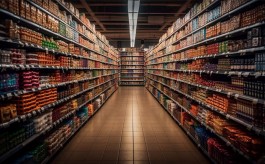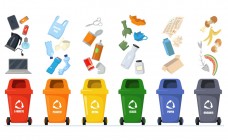Climate sustainability @ Retail: What does it take?
By Retail4Growth Bureau | May 09, 2022
A new report by McKinsey enumerates the need and action points for meaningful sustainability initiatives in retail. The bottomline is clear : the engagement of all stake holders in the value chain, including the vendors, suppliers, consumers and regulators.

A new McKinsey report titled ‘Climate sustainability in retail: Who will pay?’ lists out some action plans for the retail industry to follow the path of meaningful sustaianbility initiatives.
 As the report points out, businesses across industry will need to play a more praoctive role in adhering to the goals set out by the UN Climate Change Conference in Glasgow (COP26) to meet the world’s decarbonization commitments by 2050.
As the report points out, businesses across industry will need to play a more praoctive role in adhering to the goals set out by the UN Climate Change Conference in Glasgow (COP26) to meet the world’s decarbonization commitments by 2050.
Here are some highlights from the McKinsey report, which are of relevance to retail :
- In 2016, there were only a small handful of major retailers—including Walmart—with a science-based target to reduce carbon emissions. Just five years later, more than 65 global retailers set such targets, and the number is more than doubling each year.
- Cost of decarbonization will be borne, to varying degrees, by stakeholders across the value chain, including suppliers, workers, the public sector, investors, and consumers.
- Retailers need to analyse and understand the total cost of decarbonsation and take some appropriate measures. For example, they could seek to improve the energy efficiency of stores with LEDs; more efficient heating, ventilation, and air-conditioning (HVAC) motors; heat pumps; on-site solar-power generation; and battery energy storage. They might also decarbonize their owned transportation fleet by upgrading to zero-emissions vehicles (for example, those that run on batteries or fuel cells). For grocers, refrigeration in stores is a particular emissions concern and will require efforts to identify and manage refrigerant leaks and, in extreme cases, the complete overhaul of store systems, the report says.
- The report highlights the example of IKEA, which has committed to zero-carbon fuels for container shipping by 2040. this means that shipping vendors will need to adopt such fuels. Global shipping reportedly accounts for almost 3% of the world’s CO2 emissions, so this move is likely to have an impact.
- There is a need for retailers to create transparency around the implications for their own P&L and balance sheets and assess the cost burden of reducing emissions. As the report points out, stores located in malls, like apparel and fashion retailers may find it more cost intenstive to convert stores to heat pumps and the operational feasibility highly dependent on the landlord. Similarly for grocers with owned transportation fleets, the conversion to fuel cell electric vehicles (FCEVs) will be more costly due to the cold chain required for perishables.
- As the report points out, given the magnitude of cost implications, it is important for retailers need to understand how the transition to a lowcarbon economy will affect their bottom line and the need for each stakeholder group to bear a portion of the costs. This means the involvement of vendors and suppliers, which includes the suppliers of retail solutions like lighting, fixtures and VM elements, as also the store architects and designers. Perhaps retailers with the suppliers and solution providers could collaborate and set down clear goals with the costs distributed. The fact is that sustainability is about long term implications and therefore requires long term vision and planning.
- The good news is that a rising number of consumers are will to pay for environmentally friendly sustainable inititiaves and retailers and brands could well collaborate with them through meaningful engagements like perks and contests to encourage and sustain these initiatives.
- Finally, as the report points out, is the role of governments and regulators. Besides stringent regulations and increasing the cost of compliance for business, particularly with respect to a carbon tax, authorities could also become a source of increased funding for retail sustainability efforts, says the report. “Governments across the world have set net-zero commitments, with accompanying spending plans to decarbonize parts of the economy. Some of this spending may go to promote consumer adoption of green products through public stimulus such as financing support for energy efficient products, and other funds could support innovation through grants to technology companies, academic funding, or directed government procurement.” As the report points out, government spending will likely lower the cost of capital required to invest in carbon reduction and other sustainability initiatives.









Comments